
It allows to keep PV going, with more focus towards AI, but keeping be one of the few truly independent places.
-
I had my Super 8mm home movies transferred to DVD about 20 years ago. I think they bounced the image off a mirror and onto a video camera and then made the DVD, I think. Anyway, the transfer isn't bad really and I've edited the footage in Premiere on and off over the years, however, I was recently thinking that there must be better ways of doing it today in 2013. Has anyone here had their Super 8 films ran through a proper film scanner for archiving? How did it look? Did it cost a million dollars? ; ) I have about 13 reels of various lengths. If it is hyper pricey I wouldn't do it, but of course that's relative to the person. I've done a google search but I'm looking to hear from someone here who might have done this.
Harold House
-
Did a little more research on my own. There are several places. One in Boston will do home movies among many other film formats. They do it in 2K from a Lasergraphics ScanStation, if that means anything to anyone. Since the end result would be image files or a qt movie that would be a lot nicer to push pixels around a bit in Premiere. It certainly sounds better than the telecine method that I got 20 years ago. I'll get a quote from them and see. Hope it's not a million dollars. ; )
-
Yes, you can get films telecined or datacined so you'll have QT files. It's fairly expensive but great for the right projects. There are still a few labs that will do this. Try pro8mm.com
-
OK, now I'm learning that I might be able to get an adapter for my Epson V500 scanner and maybe do this myself? I've got the time so maybe that's the way to go. Anyone every done it this way?
-
Thanks for the reply but I guess I was focusing on actual scanning as I'm under the impression, perhaps falsely, that way is superior to the telecine method. Perhaps I have it backwards.
-
OK, after further research, it's looking like, and this is ballpark, I'd have to pay about .60 cents per foot on the low side and about $2.00 per foot on the high side depending upon how much post film clean up, dust removal, and stabilization I want them to do.
-
No, a Spirit telecine/datacine wet-gate transfer would be the best. These are optimized to the task and do a beautiful job. They're just expensive. I think you can do it yourself with a scanner but you'll find it an onerous task that yields marginal results. But give it a try.
-
I think there's some software that will sequence and maybe even digitally pin-register images for you if done on a still photo scanner...
Edit: here is the software http://www.wkurz.com/ example from it along with some explainations? -
I actually looked into this a short while ago. It seems the best method is the one Kinetta is doing (see here: http://www.kinetta.com/scans.html .) They'll do 3.3k scans - up to 3296x2472 - of 8mm film (and they were going to have 5k scanning if an order came in for a significant amount calling for that resolution.) The prices I was quoted was $.95/foot for 8mm or Super 8, $.65/foot for 16mm, and $.52/foot for 32mm. That includes scanning and grading, although they do have a minimum order charge.
Definitely check out the Nixon movies in the link - they're incredible and were part of a recent documentary (http://www.ournixon.com/ .)
-
Thanks for those informative replies. I'm off the the do-it-myself method as I have so many rolls of film and it would be too daunting, for me anyway. I've since found 4 or 5 highly regards film scanning sites that do 8mm. So, I wonder what the final resolution of a frame of super 8 film would be in the end. Would be around 720x480ish? Would it be a few hundred thousands of pixels? Most sites will deliver it to me at 1080p in ProRes if I want it. I want to do the color correction myself and the stabilizing myself, if needed. So, anyway, thanks forum. I guess I'll send my rolls to a good film scanning site.
-
Yeah I think going with a scanning service is the best route; you can maybe negotiate prices down too... Oh yeah I just came across this.. http://kinograph.cc/.. this might be what many of us have longed for.. an affordable desktop scanning solution
-
Hi, I do film transfer as a job, once on a while, for some clients. I simply use a projector and a self-made square cone that has a diagonal mirror on one end and a translucent glass on the other end. The only upgrade I did to the process was to use the gh3 to capture movies, just to have more control on dynamic range and color. But there are a lot of problems: the projector is old, few days ago the belt broke, films get stuck if people had used tape to join two or more pieces... and I have to stop and start over and over. The self made scanning process described on http://www.wkurz.com/ is very interesting, though slow. I think I will give it a try using my V750 Epson scanner... the only thing I didn't find is how to build the film transport unit
-
DIY Super 8 film scanning is cumbersome and highly unpractical since it's not just about scanning individual frames, at highest resolution to get the max out of the small 8mm image (5.8 x 4mm vs. 36x24mm for 35mm still pictures = 1/37th frame size). You also need to have a steady image frame-to-frame, and thus nanometer precision either in film transport or software image alignment. And no, an NLE stabilizer such as Premiere's Warp Stabilizer doesn't cut it for this purpose.
There are many 8mm telecine solutions on the market, ranging from consumer/prosumer (like Moviestuff's repurposed Super 8 projectors) to professional. The best quality is currently achieved by professional Rank Cintel or Spirit Datacine telecine machines with Super 8 gates. There are telecine companies which use these machines and offer Super 8 scanning. In Europe, AVP in Munich, in the U.S., Cinelicious (http://cinelicious.tv).
-
I started this thread about 11 years ago http://photo.net/video-forum/003WXX (how to transfer 8mm film to DVD) Since that time, I have invested my entire career in developing and providing the best 8mm transfer and restoration to clients by utilizing not only the best scanning equipment (we use MWA Choice 2K+/FlashScan HD for our work) but also optimizing the picture quality during scanning, and special post processing to enhance otherwise dusty and grainy film.
-
Quality-wise, the MWA scanners range in the middle between prosumer and high-end devices. Most service providers working with them offer scanning at attractive price/quality ratios. Results greatly depend on operator skill level (since the scanner sensors capture only a fraction of the color resolution and dynamic range of the film footage). For scanning on a Rank Cintel or Spirit Datacine at a top-end service provider like AVP and Cinelicious, expect to pay substantially more than for a (competent) provider using the MWAs. I'm personally not familiar with filmtransfer.com; in Europe, Berlin-based Screenshot is a reputable and affordable service provider using MWA scanners.
-
Re: cantsin - that information is incorrect. Here is bare bones information:
Rank Cintel: Price = $12,000 - These are machines from the 90's. Quality: Standard def video. Max resolution 720x480
Spirit Datacine: Price = $25K-$50K - Quality: HD sensors manufactured early 2000's. 1920x1080 resolution (uprezzed to 2048x1556 on datacine) Sprocket driven! Note: 8mm/Super 8 gates are very rare.
MWA Choice 2K+: $150K+ Quality: 2012/2013 state-of-the-art sensors Current res: 2336x1752, upgradeable but 1752p is more than 2.5x res of 1080P for 8mm/super 8 film. Transport is sprocketless which is preferred when dealing with archival film.
-
Well, I'm certainly leaning towards a sprocketless approach as my films are from 1979-82. My super 8mm movies have a lot of audio so I wonder if that's going to matter. I'll have to measure up my footage and see which scanning site offers the best quality to price. Here a few stills from the telecine transfer I had done in 1992. I'm hoping, perhaps unrealistically, that scanning will allow me/them to clean and brighten these old films from days gone by. I bought a nice Elmo Super 8mm movie camera and shot some stuff when I was in the navy. I had a nice Elmo projector that allowed me to splice/tape editing scenes, etc. but alas, had to sell it all in 1982 to help pay for college. I digress.
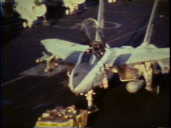
 vlcsnap-2013-12-12-16h11m21s49.png720 x 540 - 777K
vlcsnap-2013-12-12-16h11m21s49.png720 x 540 - 777K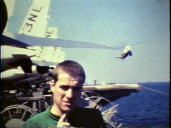
 vlcsnap-2013-12-12-16h05m49s43.png720 x 540 - 872K
vlcsnap-2013-12-12-16h05m49s43.png720 x 540 - 872K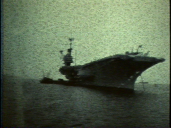
 vlcsnap-2013-12-12-16h16m59s110.png720 x 540 - 847K
vlcsnap-2013-12-12-16h16m59s110.png720 x 540 - 847K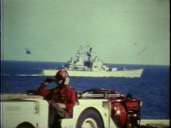
 vlcsnap-2013-12-12-16h03m33s231.png720 x 540 - 813K
vlcsnap-2013-12-12-16h03m33s231.png720 x 540 - 813K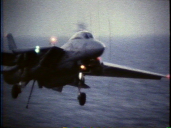
 vlcsnap-2013-12-12-16h11m03s98.png720 x 540 - 773K
vlcsnap-2013-12-12-16h11m03s98.png720 x 540 - 773K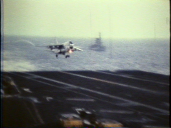
 vlcsnap-2013-12-12-16h10m34s96.png720 x 540 - 693K
vlcsnap-2013-12-12-16h10m34s96.png720 x 540 - 693K -
For a 92' transfer this is quite good (though DVD did not come out until 1997, so guessing it was transferred to tape first?)
You should expect your 2013/2014 version to have much clearer, cleaner, vibrant, and most importantly, accurate rendition of your super 8mm movies in digital format. With color correction and dust removal, your super 8 can look as good as the day it was shot.
-
You are right, about that 1992 thing. They did give me a DVD so it must've been in the late 90s that I had it done. Ah, memory, a fleeting thing for sure. Good to know that it would be cleaned up substantially. What about the audio strip of the film? I doubt the scanner would do that too. I have the audio from the DVD so I guess I could just use that.
-
The MWA scanners have a built-in dual-magnetic audio reader which produces excellent reproduction of the audio track(s). Here's an example of super 8 w/ audio done on a FlashScan HD (this is without any post-processing/dust clean-up): https://www.pixcel.com/archivecloud/48651
-
there's a new film scanner coming up by reflecta: https://reflecta.de/en/products/detail/~id.731/reflecta-Super-8-Scanner---------available-in-February-2014.html what do you think about it?
-
goko made a super 8 video transfer device that didn't give too bad results. You can often find them on ebay. TC-20 , or TC-301. Here's a sample
I've looked into the flatbed method and it's rather tedious and also requires cutting the footage. You can find a lot of diy'ers here-
ps...hadn't been to filmshooting in a while and went after linking. Found this -
http://www.bhphotovideo.com/bnh/controller/home?O=nav&A=switchLanguage&Q=&ul=E
Howdy, Stranger!
It looks like you're new here. If you want to get involved, click one of these buttons!
Categories
- Topics List23,911
- Blog5,718
- General and News1,330
- Hacks and Patches1,148
- ↳ Top Settings33
- ↳ Beginners254
- ↳ Archives402
- ↳ Hacks News and Development56
- Cameras2,342
- ↳ Panasonic984
- ↳ Canon118
- ↳ Sony154
- ↳ Nikon95
- ↳ Pentax and Samsung70
- ↳ Olympus and Fujifilm98
- ↳ Compacts and Camcorders295
- ↳ Smartphones for video96
- ↳ Pro Video Cameras191
- ↳ BlackMagic and other raw cameras116
- Skill1,959
- ↳ Business and distribution66
- ↳ Preparation, scripts and legal38
- ↳ Art149
- ↳ Import, Convert, Exporting291
- ↳ Editors190
- ↳ Effects and stunts115
- ↳ Color grading197
- ↳ Sound and Music280
- ↳ Lighting96
- ↳ Software and storage tips266
- Gear5,407
- ↳ Filters, Adapters, Matte boxes344
- ↳ Lenses1,577
- ↳ Follow focus and gears93
- ↳ Sound496
- ↳ Lighting gear313
- ↳ Camera movement230
- ↳ Gimbals and copters302
- ↳ Rigs and related stuff271
- ↳ Power solutions83
- ↳ Monitors and viewfinders339
- ↳ Tripods and fluid heads139
- ↳ Storage286
- ↳ Computers and studio gear559
- ↳ VR and 3D248
- Showcase1,859
- Marketplace2,834
- Offtopic1,314



